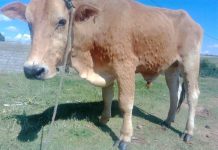Africa-Press – Lesotho. In the Bhagavad Gita, Krishna says, “Daivi hyesa guna-mayi mama maya duratyaya mam eva ye prapadyante mayam etam taranti te” . This means, “Hey Arjuna, I have tied you up in this janma, it’s impossible for you to break from the ties in this lifetime.
Only one who gets hold of my feet crosses this ocean of samsara (the vicious cycle of birth and death)”. While we are born out of our karma (deeds), the Lord takes incarnations out of His sowseelyam (the quality of the Supreme to come down and mingle with us – the inferior ones).
In His Krishna avatar, what a wonder He not only steals butter but also our hearts. As everything is His, can Krishna’s act of stealing butter act be labelled as mere stealing? Rather, every act of His has an in-depth message to us.
Butter represents atma (soul) and the pot symbolises samsara. So here Krishna takes our atma by breaking our ties from samsara to give us eternal bliss in Vaikunda.
In this article, we shall probe into the hidden meaning of Krishna’s acts. The first demon sent by Kamsa to slay Krishna was Putana. The wicked Putana disguised in the form of a beautiful woman entered Gokulam with the intention to feed poisoned milk to baby Krishna.
While mother Yasodha was away, Putana took baby Krishna and started to feed Him. He was so hungry that he sucked the milk as well as her life. Here, Puthana’s breasts stand for ahankara (sense of ‘I’) and mamakara (sense of ‘mine’).
Thus, Krishna sucks ignorance (of knowledge about the Supreme and of one’s true nature), kills ahankara and mamakara, and liberates us from samsara. When Yasodha laid baby Krishna in the cradle near a cart, another demon named Sakatasuran got into the wheels of the cart with the intention to crash the cradle and thereby kill Krishna.
When the wheels rolled towards Krishna, He kicked the wheels with His feet and the demon was annihilated. Thus, His lotus feet are the only solace for us to get rid of this wheel of life.
Andal (female saint-poet 3000 BC from South India) in her hymns ‘Thiruppavai’ has sung thus: “Andru ivvulagam alandhai ! adi pottri, Sendranguth thennilangai chettrai ! thirall pottri,
Pondrach sakadam udathaai ! pugazh pottri. ” This means: That day you measured this world (in Thiruvikraman avatar) ! glory to your feet, You went to Lanka and vanquished its ruler (Ravana) ! glory to your valour,
You kicked the demon Sakatasuran ! glory to your fame. In first two verses, Andal hails the Lord’s feet consecutively – for He has measured this world and since He has walked all the way to Lanka during Rama avatar.
Surprisingly, in the very next verse, Andal didn’t hail Lord’s feet for slaying the demon Sakatasuran (though the feet aided Him) rather she sings glory to His fame.
The reason is, Andal’s heart goes out to the compassion of Lord’s feet to the extent that she diverts our amazement at baby Krishna’s lotus feet. Her feeling to protect the Omnipotent emanates out of immense love for the Lord.
One day, mother Yashoda had left baby Krishna in the courtyard all by Himself. Just then, another demon Trinavarta arrived in the form of a whirlwind and flew away with the child.
Raising a swirl of dust, the whirlwind-demon skyrocketed higher and higher into the sky. Trinavarta tried to carry the baby on his shoulders, but Krishna made himself hefty.
Unable to bear baby Krishna’s weight, he was forced to come down on the ground. And Krishna got of Trinavarta’s neck and knocked him down. It means, for prathikoolar (one who rebels against Him) he becomes heavy. Whereas, for anukoolar (one who longs for Him) he makes Himself light.
Otherwise, would it have been feasible for mother Yasodha to tie baby Krishna (the Omnipotent) to a mortar with a mere rope? This is a splendid display of His sowlabyam (simplicity) in contrast to His paratuvam (unparalleled supreme self)!
Similarly, He rescues us from this whirl of birth and death cycle. When the people of Gokulam suffered from the atrocities of five-headed snake Kalinga in the Yamuna river, young Krishna plunged into the river and began to dance on the each of its rising hoods.
The pressure of Krishna’s feet suppressed the pride of the snake. While Kalinga was staggering towards death, his wives prostrated before Krishna to spare his life.
Thus, Krishna banished Kalinga to the ocean. This indicates the effort needed to suppress the human senses that distract one from the pursuit of virtues and higher values of life.
The hood symbolizes – Kama (lust), krotha (anger), moha (attachment), mada (pride ) and matsarya (greed). Only with His grace we can win over these internal enemies.
In the Bhagavad Gita, Lord Krishna says that the person who understands His incarnations and His actions during those incarnations, will attain eternal bliss. Such is the greatness of secrets of His incarnations.
For More News And Analysis About Lesotho Follow Africa-Press






